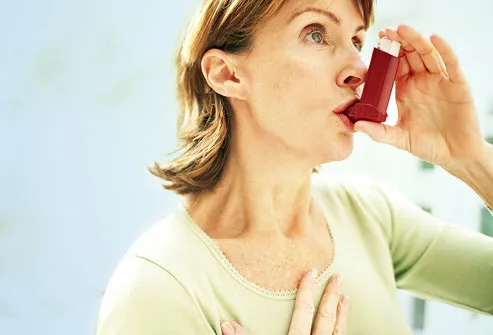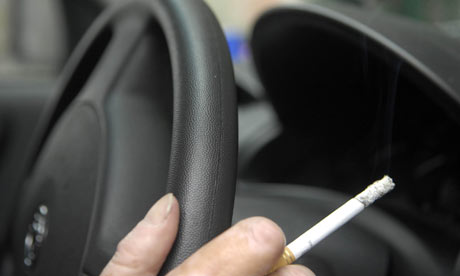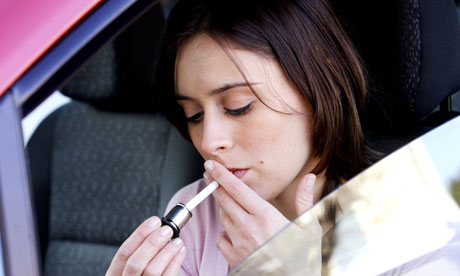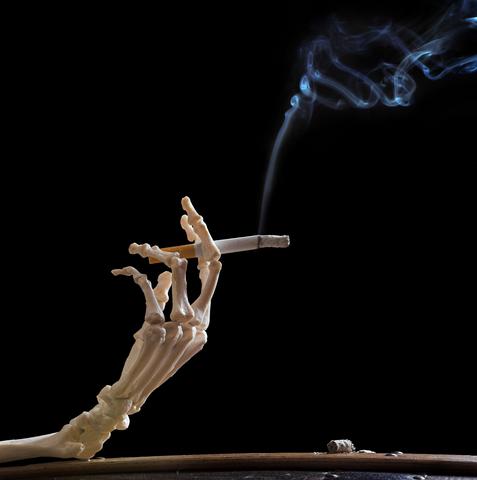You might smoke them or hate them - love them or berate them - but regardless of your position, the government has decided to ban smoke from more and more bars, restaurants and cafes across the US. The smoking ban seems to strike a nerve in everyone. The news is either met with extreme glee or extreme irritation - all depending on whether you smoke, don't smoke, own a bar, feel a ban infringes on your rights or wish the government instituted the ban years ago.
Quite a few controversies surround the smoking bans and smoking in general - and everyone seems to have their own opinion on whether the move towards no smoking was right or wrong:
Non-smokers: almost all non-smokers are happy for the ban, and encourage the government apply it to more places, including cars and homes - so that the children of smokers will not have to suffer in a smoky environment.
Smokers: the majority of smokers feel as though the public is prejudiced against them. There are even a few who argue that the negative side-effects of smoking are not solidly proven by science. There are less and less people to support this stance as more and more information is published about the risks of smoking.
Business Owners: business owners who had to suddenly enforce the ban in their businesses, restaurants, clubs and bars have mixed feelings about the new laws. Some claim that there has been no change in the number of patrons - while others have been completely devastated.
Politically Minded: a surprising number of smokers and non-smokers who oppose the ban simply because they see it as an infringement on their rights. They argue that once the door is open to government regulating the behaviors of the public, who knows what other rights will be taken away.
The Good, the Bad and the Ugly
In my opinion, all sides of the smoking ban argument raise legitimate points. Undoubtedly there are benefits to the smoking ban - the obvious being the improvement of public health. On the other side of the card, there are some negative points negatives like the number of business owners who can no longer pay their bills because their patrons have fled to the few, smoke-friendly clubs.
As I've researched this article, I have also found some completely unforeseen, border-line weird side-effects of the ban. For example, the statistics on how the ban has impacted drunk driving fatalities, spawned a generation of "healthy" cigarettes and linked barbecues to some of the same chemicals as smoke.
This article will give you a breakdown of my take on smoking bans including "the good, the bad and the ugly".
The Good
Here are some good things that have been produced by the bans:
Drop in Heart Attack Occurrence. This is an absolutely amazing fact! Heart attacks have long been associated with cigarette smoke, since the chemicals in smoke cause narrowing of the veins and arteries in the body, putting strain on the heart. Clotting is also a cause of heart attack that is often directly related to smoking. Research done at the University of California found that after only 1 year of having the smoking ban in effect, heart attack rates were 17% lower than usual! Some of the individual towns studied by the University of California had more dramatic results - Helena, Montana had its heart attack rates cut in half only after 6 months of the smoking ban!
Healthier Work Place. Some estimate that working in a smoky environment for a long period of time can cut your life expectancy by 10 years! This is because the same risks that come with smoking also apply for second hand smoke. A smoke-filled workplace can be a non-stop source of secondhand smoke - working an 8 hour shift in a smoking environment is similar to chain smoking for all of those hours. So now your favorite bartender or waiter can look forward to living a longer life with a decreased risk of developing cancer, COPD, stroke or heart attacks. (But then again, if they choose to work in a smoky environment in the first place then avoiding smoke may not be at the top of their list. You would have to agree that no one made them work there - there are many other smoke-free callings and careers out there!)
Healthier Restaurants and Bars. No more coming home from a night out with clothing that reeks of smoke! Now your favorite restaurants and nightspots are a healthy place to spend a few hours. Many businesses claim that their number of patrons have increased since the smoking ban - indicating that all of the non-smokers who used to stay home now have a good reason to go out and live it up. Smoke-free restaurants are much better for their youngest customers - since children are at more risk from cigarette smoke because of their small, developing lungs.
VFW and Elks Clubs Boost in Members. The few private clubs that do allow smoking are now in high demand. Some organizations like VFW posts and Elk clubs that used to have sparse numbers now are booming with new members (as long as they are exempt from the ban. For many of the clubs that have banned smoking, funds are so tight that they have been forced to give up their charitable donations or have closed completely because of it).
More "Quitters". In some locations, the ban has sparked renewed efforts to quit smoking for good. New York City reports that adult smoking is down 19% - which translates into 240,000 less smokers in NYC's population. (Unfortunately, the flip side of these statistics is that other areas have actually reported an increase in smoking among working class men since the ban.) Removing the smoke from public places should technically help the fight to quit. This is partially because of the way that nicotine re-wires your brain. The more nicotine that enters your body, the more nicotine receptors develop in your brain to absorb the chemicals. A smokers brain would have billions more of the receptors than a non-smoker. Being in a place where you can smell smoke, or see someone else smoking in enough to switch on the receptors that cause nicotine cravings. The smoking ban cuts the number of times a "quitter" will be reminded of smoke cravings by the nicotine receptors during a night out, making it easier to quit.
The Bad
Here are some negative effects of the smoking ban:
Bars and Restaurants Driven Out of Business. It seems like there are many areas in the country where the smoking ban has taken such a toll on their businesses that owners are closing their doors for good. Certain states, like Delaware (40% decrease in profits) have had a substantial loss in profits since the smoking ban took effect. Combined with the economic downturn of recent months, the results are ruinous. For business owners, closing a business down is a nightmare scenario - and for employees it means that their jobs hang in the balance. Clubs like VFW Posts and Elk Clubs that were listed in the "Good" category above can just as easily fall into the "Bad" category all depending on whether the smoking bans applied to them. These organizations were once known for their charitable donations to the community - but now their money making events like Bingo no longer attract a crowd. Now they struggle to keep their doors open.
Job Loss. It goes without saying that businesses who have been hit hard by the smoking ban will be the source of lost jobs. These small bars and night clubs might have been flourishing up until they were told that smoking was off limits to their patrons. For many owners, their business was their livelihood - and losing their business spells financial disaster for them. Employees have reason to worry as well. In general, bartenders, waiters and waitresses make very little money per hour, because the greater part of their income comes from tips. The loss of smoking patrons means that they get fewer tips, and as a result, their bills become harder and harder to pay each month.
Erosion of Personal / Property Rights. Many people (smoker and non smoker alike) view the government imposed bans on smoking in public places as a dangerous stance. Was it right for the government to ban the use of a legal product on private property? (i.e. any property that is owned by a private citizen. Private Citizens are people who aren't holding a public office . . . so that means most of us). They see this as infringing on the rights of the public - and that the future may bring more of these controlling mandates on personal or public matters. What's next? A ban on greasy, fast food meals or a nationwide ice cream ban? Obesity is the fastest growing cause of avoidable deaths and diseases in the U.S., so this would only be the next logical step towards better public health. How would you feel if the government began regulating the meals a restaurant was allowed to serve you - or what food you were allowed to eat in your own home?
"The Quitters". Yes, I know - I just listed the "Quitters" as a "Good" outcome of the smoking ban, but it can just as easily be categorized as "Bad". This is because the average smoker burns up to 200 calories more per day because of their habit. Also, since nicotine is an appetite suppressant, they are in general less hungry throughout the day. When someone quits smoking, the most common means of coping with the withdrawal is eating. Once taste buds get back their ability to taste after quitting smoking, food will taste better and be even more irresistible. The average quitter gains anywhere from 10-20 pounds - but roughly 10% of all quitters will experience 30 pounds or more in weight gain. This means that out of those 240,000 people who quit smoking in NYC because of the ban, 24,000 of them are will join the ranks of people who are in danger of obesity. Here's the ironic part: many of the same diseases linked to smoking are linked to obesity (heart attack, stroke, high blood pressure, cancers, asthma, depression, etc).
The Ugly
Here are some very strange facts about the smoking ban:
More Drunk Driving Deaths. No one wants to die in a hospital bed as a result of inhaling second hand smoke. How about being run down on the road by an inebriated smoker? Oddly enough, the smoking ban actually increases your chances of dying in a car accident. A study conducted at the University of Wisconsin-Milwaukee compared the number of drunk driving fatalities in areas where smoking was banned versus areas where smoking was still allowed. The results were surprising and suggest that smokers are willing to drive farther and farther just to find a bar where they can light up and enjoy a couple of drinks. Before the bans took effect, a smoker could walk to the local tavern. Now, he must take to the road and drive to a neighboring county or state that allows him to smoke in public. The reasons for the added danger is two fold: getting behind the wheel in the first place and then the added travel time. This means that there are more drunk drivers swerving down the road in smoking ban territory than in smoke-friendly areas. It just seems like if the smoke doesn't kill you one way, it's going to kill you another way.
Cigarette Companies Developing "Healthy" Cigarettes. Huh? Healthy Cigarettes? The cigarette company British American Tobacco is hard at work developing new, less toxic cigarettes. It sounds crazy, but the truth is that they have been able to reduce the toxins in their new cigarettes by up to 90% as compared to conventional cigarettes. To test their product, they recruited a room full of smokers to puff on the new cigarettes. Then they tested biomarkers in the test subjects' saliva and urine and compared those levels to regular cigarettes smokers and non-smokers. So, will cigarettes get a healthy, new, image makeover in the future? British American Tobacco would like to think so.
Every-Day Sources of the Same Toxins. If you escape the cigarette smoke, then what about the other sources of the same pollutants found in cigarettes. You might be exposed to more of these chemicals than you realize! The frying pan full of bacon, or the barbequed shrimp, or the gas station - these are a few sources of pollutants that are the same as those found in cigarettes. Cooking bacon fills the house with volatile nitrosamines that are the same as those found in cigarette smoke. Eating barbequed food exposes you to polyaromatic hydrocarbons that are also found in smoke. Standing at the gas station to fill up your car - or filling up the lawn mower with gasoline - can easily fill your lungs with a heavy dose of benzene that is present in both gasoline fumes and cigarette smoke. These are just a few examples of other toxic situations that you encounter everyday. Has the smoking ban really made life safer? I guess so - as long as you don't drive a car or other gas-powered vehicle to your favorite bacon and barbeque-free night spot.
Was placing a Government Ban on Smoking the Only Way?
Whether you are a smoker or not, it sure seems like there were other options out there besides the all out ban.
If the government wants a nation of non-smokers, maybe the solution would be taxing cigarettes more heavily - or making them illegal altogether. No - they couldn't do that because big tobacco pours huge amounts of money into political contributions and has a very powerful lobby. Plus, if cigarettes were made illegal, the loss of tax income to the government would be staggering.
Maybe the solution is segregating smokers and non-smoker by creating pro-smoke and anti-smoking bars? It sounds extreme, but it would certainly give customers and employees more options. We don't need laws for this option - just progressive thinking bar owners.
Another plausible solution would be to have smoking hours after the dinner rush - when most people stop at the bar for a drink and a smoke. Pros: prevent children from the heaviest of smoke levels. Cons: unless the business does something to clean the air between the night time smoking hours and the daytime crowds, one could argue that a lot of the smoke is still in the air.
What about improving the air inside the bars? This seems like the easiest solution. The challenge is that the most prominent technology in the smoke removal industry were electrostatic smoke eaters. See, companies that made these machines played on the bar and business owners wishes of not wanting to spend money on filters. So, they created electronic smoke eaters that didn't require filters. But was the problem really solved? Hardly... The electronic smoke eaters required time consuming and messy cleanups. If the electronic smoke eaters weren't maintained properly, the effectiveness drops off considerably. This basically means that they would stop working. Based on the poor maintenance and even worse performance - the bar and restaurant industry got the incorrect impression that smoke eaters don't work. As a result, they stopped trying to solve the problem altogether. If more businesses had tried the filter based smoke eaters, they would have had a workable solution. Perhaps if this were the case, bar owners would have solved their own problems and the government could have stayed out of it. Of course no smoke removal system is perfect, but a HEPA filter based smoke eater that also has a carbon filter for gases, fumes and odors and a pre-filter for the heavy particulate can do a really good job. The key is having enough power to filter the air - an entire room needs to cycle through the smoke eater's filters 10-12 times an hour and then you can really make a dramatic difference in the air quality.
So what do YOU think about the smoking bans?
Are you a smoker?
A non-smoker?
A business owner?
How have these smoking bans affected you - positively or negatively? Please leave a comment! Visit My Air Purifier for straight talk and no hype about what air purifiers and air cleaners work best for allergies, asthma, smoke removal and more. We specialize in both commercial and residential air cleaners and purifiers.




















